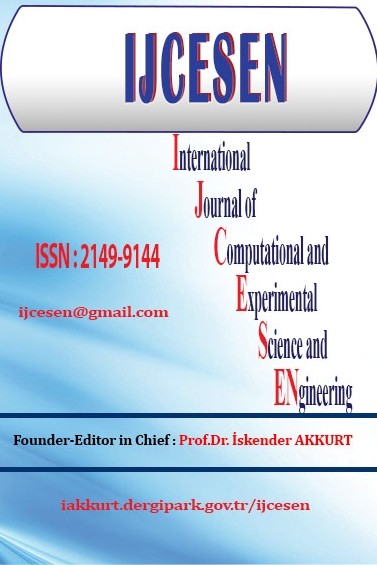Modeling of silicon solar cells performances by MATLAB
Modeling of silicon solar cells performances by MATLAB
In this work, the programming tool MATLAB was used to predict the performances of single-crystal silicon solar cells. Two particular structures were studied, namely the conventional cell of N+P type and the cell with a Back surface field (BSF) layer of the N+PP+ type. The parameters of these cells (the tension of open circuit, the current of short circuit and internal quantum efficiency (IQE)) were estimated with a good accuracy. Back surface field silicon (i.e. N+PP+) structures were found to have better characteristics than the conventional solar cells. We noticed that the effective recombination velocity of the minority carriers could be minimized by simple optimization of the doping concentration in the back layer. The results were in agreement with literature.
Keywords:
Bogomolny transfer operator with multiple interfaces at which the material properties change discontinuously. We Boundary integral equations Green function formulate the transfer operator in such a way that it can in principle be made exact, and,
___
- M. Abramowitz, I. A. Stegun “Handbook of Mathematical Functions” Dover, New York (1972)
- H. Ben Hamdin “Boundary element and transfer operator methods for multi-component wave systems” PhD Thesis, School of Mathematical Sciences, Nottingham University, UK( 2012)
- H. Ben Hamdin, G. Tanner “Multi-component BEM for the Helmholtz equation - A normal derivative method” IOS Press, Shock and Vibration, 19 (2012) 957–967
- E.B. Bogomolny “Semiclassical quantization of multidimensional systems” Nonlinearity, 5(1992) 805–866
- P. A. Boasman “Semiclassical Accuracy for Billiards” Nonlinearity, 7 (1994) 485
- S. C. Creagh, H. Ben Hamdin and G. Tanner “In-out decomposition of boundary integral equations” J.Phys. A: Math. Theor., 46(2013)
- B. Georgeot, R. E. Prange “Exact and Quasiclassical Fredholm Solutions of Quantum Billiards” Phys. Rev. Lett.,74 (15) (1992) 2851–2854
- B. Georgeot, R. E. Prange “Fredholm Theory for
- Quasiclassical Scattering” Phys. Rev. Lett.,74 (21) (1995) 4110–4113
- T. Prosen “Exact quantum surface of section method” J. Phys. A:Math. Gen., 27(1994)L709– L714
- T. Prosen “General quantum surface-of-section
- method” J. Phys. A:Math. Gen., 28(1995) 4133–4155
- Yayın Aralığı: 4
- Başlangıç: 2015
- Yayıncı: Prof.Dr. İskender Akkurt
